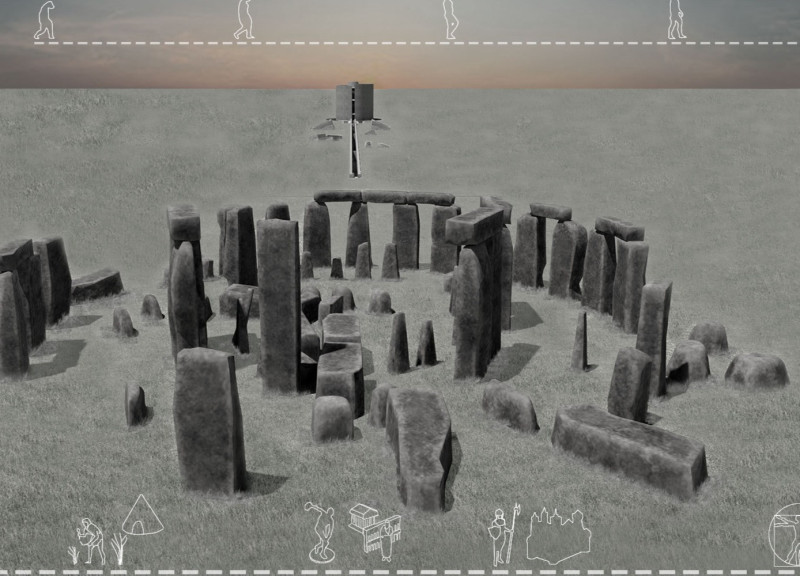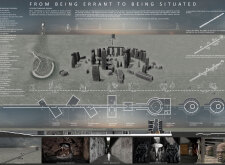5 key facts about this project
The project showcases a detailed exploration of human development, set within a framework that emphasizes historical significance. It illustrates the journey from wandering to being settled, revealing humanity's ongoing desire for stability and connection to the world. The inspiration drawn from Stonehenge in England acts as a central reference point, bridging ancient architectural traditions with modern design sensibilities, and inviting a conversation about the human experience through time.
Historical Framework
A timeline of architectural history is central to the design, highlighting distinct phases: Paleolithic, Neolithic, the age of metals, ancient age, middle ages, modern age, and contemporary age. Each phase is represented through specific spatial arrangements that mirror the cultural and technological advancements of that era. This organization supports the narrative, allowing visitors to better grasp the evolution of architectural practices across different times.
Spatial Configuration
Visitors can move through various zones, each assigned to specific historical moments and architectural styles. These spaces are thoughtfully arranged to create a sense of immersion, enabling individuals to engage with the past while also understanding the evolution of society's needs and values. The design encourages interaction, guiding exploration of how architecture captures human experiences across different historical contexts.
Materiality Implied
While the project does not specify particular materials in the presentation, each historical phase suggests its own material applications. The early use of stone reflects a fundamental connection to the past, grounding individuals in the reality of prehistoric life. As history progresses, the design may imply more sophisticated construction techniques, hinting at advancements in material use that have developed over time.
Incorporation of Natural Elements
The design interacts with the surrounding landscape, creating a connection between built forms and nature. This relationship is highlighted through features such as open courtyards and viewing areas that allow for reflections on both the architecture and its setting. By incorporating natural elements, the project acknowledges humanity's deep-rooted ties to the environment, reinforcing the theme of being situated within a broader historical narrative.


















































